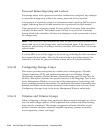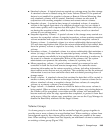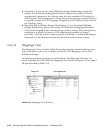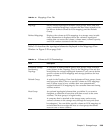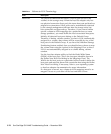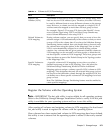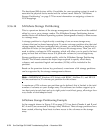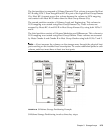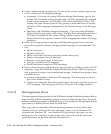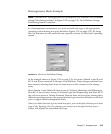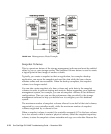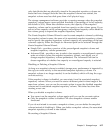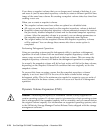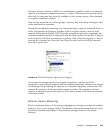
3-72 Sun StorEdge 5310 NAS Troubleshooting Guide • December 2004
The host-based SM devices utility (if available for your operating system) is used to
associate the physical device name and the volume name. Refer to “SANshare
Storage Partitioning” on page 3-72 for more information on assigning volume-to-
LUN mappings.
3.3.6.14 SANshare Storage Partitioning
This is a premium feature of the storage management software and must be enabled
either by you or your storage vendor. The SANshare Storage Partitioning feature
enables hosts with different operating systems (heterogeneous hosts) to share access
to a storage array.
A storage partition is a logical entity consisting of one or more storage array
volumes that can be shared among hosts. To create a storage partition after the total
storage capacity has been configured into volumes, you must define a single host or
collection of hosts (or host group) that will access the storage array. Then you will
need to define a volume-to-LUN mapping, which will allow you to specify the host
group or host that will have access to a particular volume in your storage array.
Storage partitions can be created quickly with the SANshare Storage Partitioning
Wizard. The Wizard contains the major steps required to specify which hosts,
volumes, and associated logical unit numbers (LUNs) will be included in the
partition.
Based on the premium feature key purchased, a maximum of 64 storage partitions
can be supported by the storage management software.
Note – IMPORTANT Windows NT, Solaris with RDAC, NetWare 5.1, and HP-UX
11.0 are restricted to 32 volumes per partition for this release.
A maximum of 256 volumes per partition can be defined; this is limited to the total
number of volumes on your storage array. The software can further support up to
two host ports in each host and up to eight ports in each host group, allowing a four-
way cluster of dual-adapter hosts.
SANshare Storage Partitioning Example
In the example shown in Figure 3-30 on page 3-73, four hosts (Omaha A and B, and
KC-A and B) are connected to Storage Array Midwest. Three storage partitions have
been created, allowing these hosts to share access to the volumes on the storage
array.



